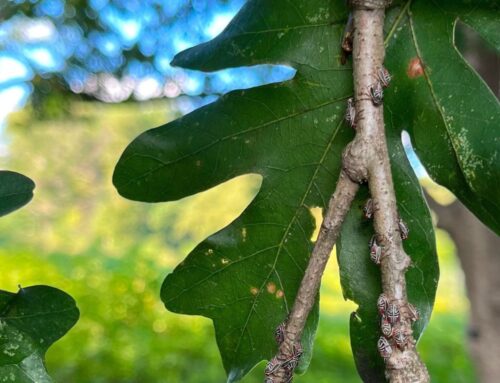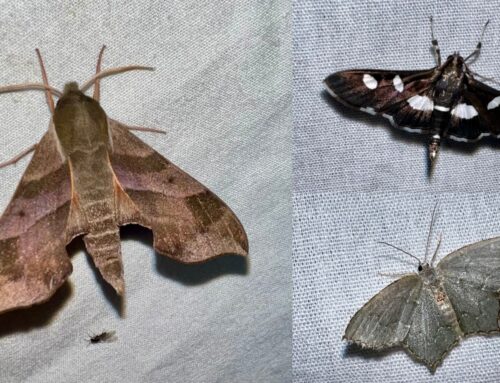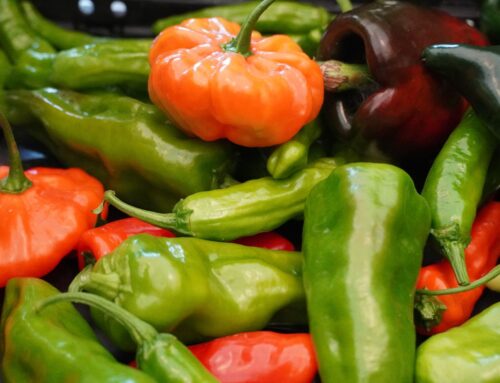There are few things more beautiful than the golden grasses and brilliant flowers of a meadow blazing against a clear September sky. Just the thought of the seed heads drifting in the breeze is enough to make you want to break out your flannel jacket and go on a hike.
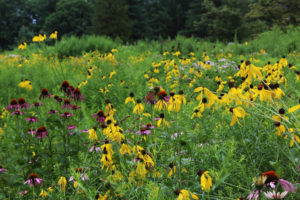
But meadows aren’t just for visiting! With a little planning you can bring the open and natural feel of a meadow right to your backyard with a pocket meadow garden. The term ‘pocket meadow’ just means a small scale garden that fits in a backyard. It still maintains the open character of a natural meadow. With the right plants and a good layout you can create a relaxing, low maintenance garden that you can enjoy all four seasons of the year.
Step One: Pick your spot!To get started take a look at your yard. You’re looking for an area that will get greater than 6 hours of full sun. Many of our favorite native meadow plants come from the prairies of the Midwest, so they are true sun worshippers. I like to think of challenging garden spots as opportunities to do something unique and special. If you have a tricky spot in your yard that’s got poor soil, hard to mow and in blazing sun — that’s a perfect spot to consider planting a home meadow.
Step Two: Understand the SiteThe next thing I do when I’m planning any garden is to take a look at the conditions. You know your backyard best, but check to see if you have poor or compacted soil, or if the site is very wet or very dry. Generally, you won’t need to do anything at all to your site to prepare it for growing a pocket meadow. It all comes down to picking the right plants!
Step Three: Choose your plants!
This is my favorite part. There are so many beautiful plants to choose from! You don’t need to stick only to natives, but many of the iconic meadow species are North American prairie plants. Here is a good quick reference to choosing your plant palette.
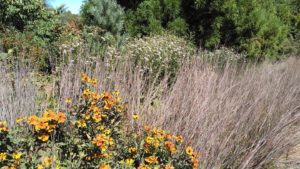
Start with choosing the grass. Believe it or not, you’re looking for roughly half the plants in your backyard meadow to be grasses. That’s what gives it the character and feel of a true meadow. But don’t picture a sea of turf. There are some spectacular grasses that will provide a backdrop for your flowers in the spring and summer, then take center stage in fall and winter. Here are just two beautiful native species!
Schizachyrium scoparium ‘Standing Ovation’, little bluestem (Height 2-4 feet, bloom time August to February). A stunning warm season grass, little bluestem will provide a soft green backdrop for your flowers in the summer and in fall, it will be a stunner as it shows off shades red and lavender and sparkles with white seed heads.
Muhlenbergia capillaris, pink Mulhy grass (Height 2-3 feet, bloom time September to November). Pink Mulhy grass is a beautiful clump forming grass that will provide a delicate green texture throughout the summer. Come fall it will blanket your garden with soft pink clouds as it blooms and sets seed. It makes a great companion for fall asters.
Choose your flowers. There are so many wonderful perennials you can add to a meadow garden. Here are just a few of my favorites. When you’re choosing your plant palette, keep in mind plant height and bloom time so you can be sure to have something interesting happening in your garden year round.
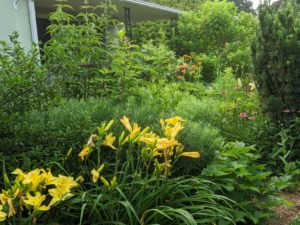
Amsonia hubrichtii, blue star (Height 2 – 3 feet, bloom time April-May). Blue star is a plant with real year round interest. With pale blue spring flowers, feathery summer foliage and burnished gold fall color it’s a must have for any home garden. Plus, with its grassy texture it can fill both roles in your pocket meadow, a grass and a flower all in one deer resistant package!
Eryngium yuccifolium, rattlesnake master (Height 4 – 5 feet, bloom time June – September). Rattlesnake master is the perfect plant to bring a little height and structure to your pocket meadow. With spare clean lines and white flowers that persist as silvery seed heads it provides a dramatic accent. Bonus, this tough plant can survive just about any garden condition, including drought.
Eupatorium coelestinum, hardy ageratum (Height 1.5 – 3 feet, bloom time July – October). Hardy ageratum, also known as blue mist flower is a beautiful fall blooming native whose deep periwinkle blossoms will glow in the autumn. A great favorite of pollinators it will brighten your yard even as the season fades.
Step Four: Plan your Layout!
This part of the process is very important for meadow plantings. The trick is to walk the line between a formal planting style, which tends to mean crisp edges and clean lines, and a more naturalistic style which allows the plants to blend together. You should plan your garden so that it will fit with your personal style. But here are some tips on creating a cohesive and appealing garden.
Decide your style: For a more formal garden plan to place your plants in groupings of one single species. The clearer the groupings of plants the more formal the garden tends to appear. For a more naturalistic planting you can blend the plants more and have groupings of three or even five different species.
Plant in odd numbers: People prefer to look at groupings that are not even numbers. When I plant I like to use 3, 5, or 7 individual plants per group. That makes the planting appear more natural.
Plant with repetition: A single grouping of a dramatic plant can be a good accent, but try to repeat groupings of species and colors throughout your garden so that the space feels cohesive.
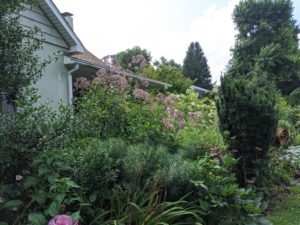
Pay attention to plant heights: This might seem silly, but make sure to place your tallest plants towards the back of your garden and your shorter plants on the edge. In the middle portion of your space it’s nice to vary the height and size of plants. Make sure you can see all the flowers!
Place your grasses first: This isn’t necessarily true for every planting, but for a pocket meadow I like to decide on the placement of my grasses first. Since they are the background of a meadow, I like to make sure I have them evenly spread throughout and then tuck my flowers around them.
Step Five: Prep and Plant!
After that, all you need to do is prepare your site and get your plants in the ground! Luckily there is no special site prep that goes into planting a pocket meadow. You don’t even need to fertilize since most meadow plants do better with a lean soil.
As for sourcing plants, it’s getting easier every year to find beautiful North American native meadow plants in most garden centers. There are many wonderful ones in our area. Tyler Arboretum is also offering a fall plant sale beginning August 31st. Our theme this year is The Four Season Garden so you’ll be able to choose lots of beautiful plants with multi season interest. You can find all the plants named here at our sale, as well as many other wonderful species.
There are few things more hopeful than seeing your plants beginning to leaf out in the spring and watching the birds, bees and butterflies visit them all season long. Planting a pocket meadow in your backyard is a wonderful way to bring nature home to enjoy every day of the year.




